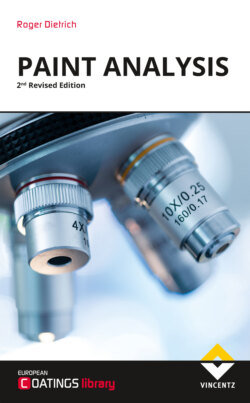Читать книгу Paint Analysis - Roger Dietrich - Страница 44
На сайте Литреса книга снята с продажи.
3.5.6Insufficient storing and shipping of samples
ОглавлениеFigure II.21: Example of an insufficiently wrapped sample
When the samples have been collected correctly according to the standards there is a good chance to ruin it by inappropriate storing and shipping. The storage as well as the sampling must not influence the area which will have to be analysed later in any way. A packaging or storing which is perfect to protect a sample against mechanical damage can be useless with respect to analytical considerations. It is quite common, for example, that samples which have to be analysed by very surface sensitive TOF-SIMS are packed into polymer foam foils. This material is brilliant if you want to protect your samples against scratches or demolition. But these foam foils are made of polyolefins and contain anti-blocking agents. If a sample is in close contact to this kind of foil, the additives are transferred to the surface of the sample. If the sample surface has to be checked for substances that can interfere with a coating, you will surely find these substances. But you never know if this is a contamination through the foil or has been there before.
The same can apply to industrial transport containers.
Figure II.22: Polymer transport container equipped with injection moulded automotive parts
They are designed to fit the product and made to protect it, but as far as samples for trace analysis are concerned, there is always the potential risk to cross-contaminate what you want to analyse. Typical contaminants are polydimethylsiloxane or injection moulding separating agents.
According to the experience of the author´s laboratory it is safe and highly recommended to wrap the samples in white (not used) copy paper.
